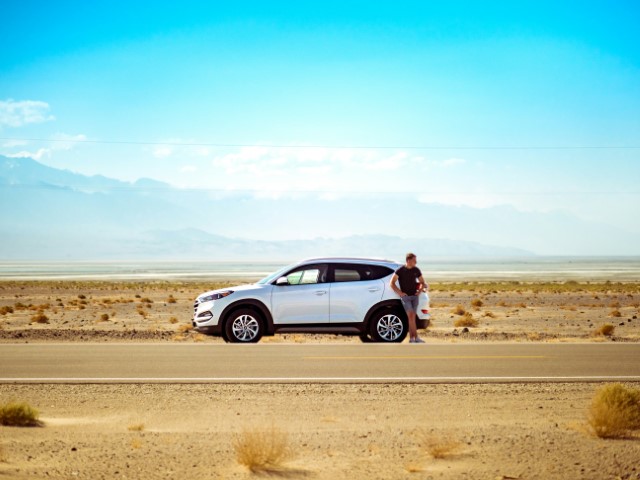 No one ever expects their car to break down, yet it happens more frequently than many would like to admit. The key to effectively handling such an unpredictable situation lies not only in what you do when it happens but also in how well-prepared you are beforehand. This guide offers practical advice for dealing with roadside emergencies and if the vehicle Breaks Down so you can face these challenges with confidence.
No one ever expects their car to break down, yet it happens more frequently than many would like to admit. The key to effectively handling such an unpredictable situation lies not only in what you do when it happens but also in how well-prepared you are beforehand. This guide offers practical advice for dealing with roadside emergencies and if the vehicle Breaks Down so you can face these challenges with confidence.
Steps to Take When Your Car Starts Breaking Down
Recognizing the Signs: Your car often communicates with you. From blinking warning lights, unusual noises or sudden power outages – don’t ignore its signals! Acknowledging them immediately could prevent serious Breaks Down problems later.
Slow Down and Pull Over Safely: If your car begins behaving unexpectedly, take care not to panic. Gradually reduce speed while seeking out an uncrowded location – be it the shoulder of the highway or an adjacent parking lot – where you can stop. Prioritizing road user safety must always remain your primary objective.
Turn On Hazard Lights: Once safely parked, activate your hazard lights to alert other drivers of your situation and significantly decrease the chance of an accident occurring. This simple step will inform them of your location while significantly lowering the risks of an incident occurring.
Check Your Surroundings: Prior to acting on any plan or taking any further action, take a moment to take stock of where you are and assess if exiting your vehicle would be prudent, especially on busy streets.
Attempt to Identify the Problem: Once it’s safe, perform basic checks to try to identify what’s going on with your car. For instance, look under the hood for any obvious issues like loose belts or tire flats and check tires for flat spots; but if unsure or unsafe it would be best to seek professional assistance instead.
When to Stay With Your Vehicle
Ensure the Safety of Yourself and Your Vehicle: Sometimes the safest choice is staying inside your vehicle until help arrives, especially if you are on a busy roadway or in an unsafe area. Lock all doors and keep windows up until assistance arrives.
Make Yourself Visible: In addition to using your hazard lights, other signals can help make yourself visible. Placing emergency triangles or flares behind your vehicle may prove useful when driving in low visibility conditions or at night if vehicle Breaks Down.
When to Seek Assistance
Reach Out: If you have a roadside assistance provider, now is the time to call them with details on your location and problem. For those in the St. Paul area without a current roadside assistance plan, consider reaching out to auto repair St. Paul roadside assistance for immediate support and efficient service. Their team is well-equipped to handle a wide range of automotive issues, ensuring that you’re back on the road safely and swiftly. You can also consider calling a tow truck or a friend who can assist may be your next best bet.
Use of a Roadside Emergency Kit: Preparing an emergency kit in advance can be lifesaving. Include items like water, snacks, first-aid supplies, flashlights, and basic tools if stranded for an extended period; such supplies will make the wait more bearable.
Communicating Your Location: With smartphones, sharing your location has never been simpler. Use the location services on your phone to inform roadside assistance providers or friends precisely where you are located.
Waiting for Assistance
Remain Safe While Waiting: Whether inside or outside, when waiting in your car when it Breaks Down, make sure that your seat belt is fastened securely; or stay out of traffic flow if waiting outside. Always prioritize safety for both yourself and your passengers during waiting.
What to Do if Someone Offers Help: While many strangers mean well when offering help, it is wise to remain cautious when accepting assistance from strangers. Only accept help if it makes you feel safe – for example by entering their vehicle directly.
Preventative Steps for Future Breakdowns
Regular Maintenance Checks: One of the best ways to ward off future breakdowns is through regular maintenance checks – oil changes, tire rotations, and checking fluid levels among others – which will catch any issues before they turn into serious ones.
Maintain a Comprehensive Emergency Kit: Your car emergency kit should adapt to your changing needs and seasonal demands, from essentials like blankets for wintertime warmth or extra water in summer. Be sure to update it as your needs and the seasons dictate it.
Learning Basic Car Maintenance: Gaining familiarity with basic car maintenance will enable you to handle minor issues on your own and save both time and money by understanding how to change a tire, jump-start your vehicle, or check oil levels – saving both precious hours of your day as well as money.
Conclusion
When you car Breaks Down you are always in a stressful and dangerous experiences, but being prepared can drastically lessen their effects and risks. By following the steps outlined here, you can ensure you’re ready to handle roadside emergencies safely and efficiently – remember: the key to successful resolution lies in staying calm, being organized, and seeking assistance when necessary.










